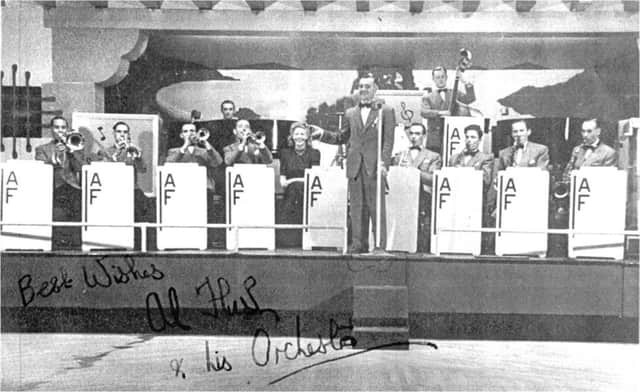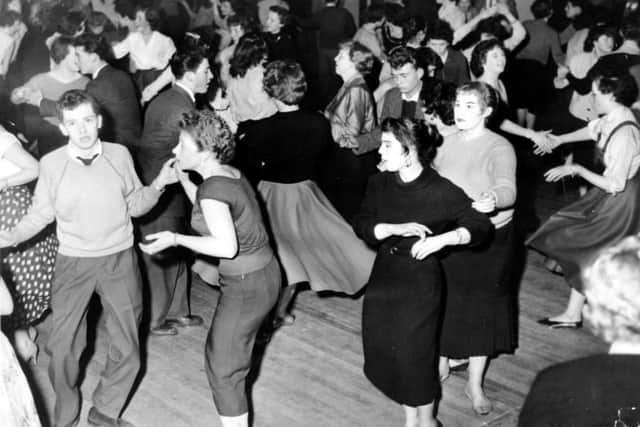Did you queue to see the Beatles in Sunderland? Or how about Davie Bowie?


And of all the dance halls in Sunderland, the one which possibly holds most memories for Wearsiders is The Rink.
It had a wonderfully illustrious line-up of performers in its heyday and they pulled in staggeringly big crowds of people.


Advertisement
Hide AdAdvertisement
Hide AdPhilip Curtis, of the Sunderland Antiquarian Society, looks back on the days when queues were ten deep to get in and the ‘full’ signs went up long before the night was over.
It was a hugely popular dance venue and - later - a nightspot.
Yet The Rink did not start out as either of those. It had a completely different beginning to its 50-year history.
It was first owned by George and Alfred Black, and The Rink was originally a roller skating rink.


Advertisement
Hide AdAdvertisement
Hide AdThe name was kept on when the building was altered to become a dance hall.
It first opened in the early 1930s and at the time, The Rink could comfortably hold 4000 dancers.
Its first Master of Ceremonies was Tom Cogden who had previously been a skating tutor at the old Rink.
Arguably, The Rink ballroom’s heyday was in the 1950s when the resident band was Al Flush and his Orchestra.
Al joined The Rink in 1946 and played well into the 1950s.
Advertisement
Hide AdAdvertisement
Hide AdHe also led Al flush and The Firecrackers who played the hits of the day.
In the 1950s and 1960s, Saturday nights were always the most popular with long queues forming early and ‘full’ notices usually being put up by 8pm.
But unlike today, coats were worn on Saturday nights and the Rink had a cloakroom where they could be deposited and a ticket issued.
During the early sixties many famous pop groups appeared at The Rink.
Advertisement
Hide AdAdvertisement
Hide AdThe most famous were The Beatles who were the star attraction there on Tuesday, May 14 in 1963. At that time they were number one in the charts with the classic hit From Me To You.
The queues to see them were 10-deep and ran well into the city centre.
Entry back in those days was 5 shilling - or 25 pence in today’s money - and the ballroom was absolutely packed with eager fans.
Benches had to be placed around the boundary of the stage as a barrier to keep back the fans - it was the beginning of Beatlemania.
Advertisement
Hide AdAdvertisement
Hide AdBy this time, Bill Sowerby and his Orchestra were the resident dance band.
The cost of getting into The Rink during the daytime was three shillings or 15 pence in today’s money.
There was a different set-up on Saturdays which featured Beat the Clock Palais Nights.
The Saturday sessions were more expensive and cost six shillings, or five shillings if you got in before 8.30pm.
Advertisement
Hide AdAdvertisement
Hide AdThe late 1960s and early 1970s saw the demise of big dance bands and brought about the introduction of DJs to The Rink.
But the stars kept on coming and pulling in the crowds.
Popular performers at the time included a young David Bowie. Other stars to appear were the groups Status Quo and Thin Lizzie who appeared there together on the same bill on September 29 in 1972.
By that time disco had become popular and small nightclubs were the order of the day.
To combat this, in 1974, The Rink had a partition wall built in order to lower the capacity to below 2000 and its name was changed to Fusion.
Advertisement
Hide AdAdvertisement
Hide AdThe old Rink dance hall had become what was then termed ‘a nightspot’.
This lasted until 1984 when it closed for the final time.
But although the days of the Rink dance room were over, the memories would last a lifetime for thousands of Sunderland people.
Do you remember The Rink?
Were you there when the Beatles appeared in 1963?
Or perhaps there was another band you preferred.
Share the memories and get in touch.
Send your emailed recollections to chris.cordner@jpress.co.uk